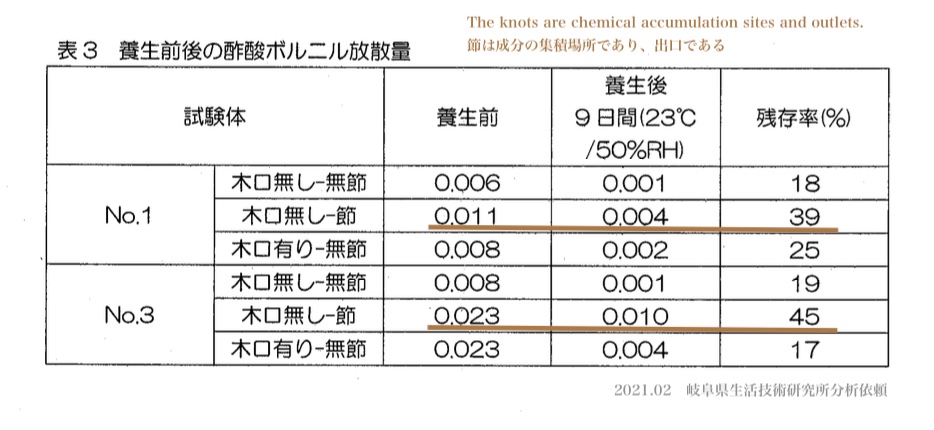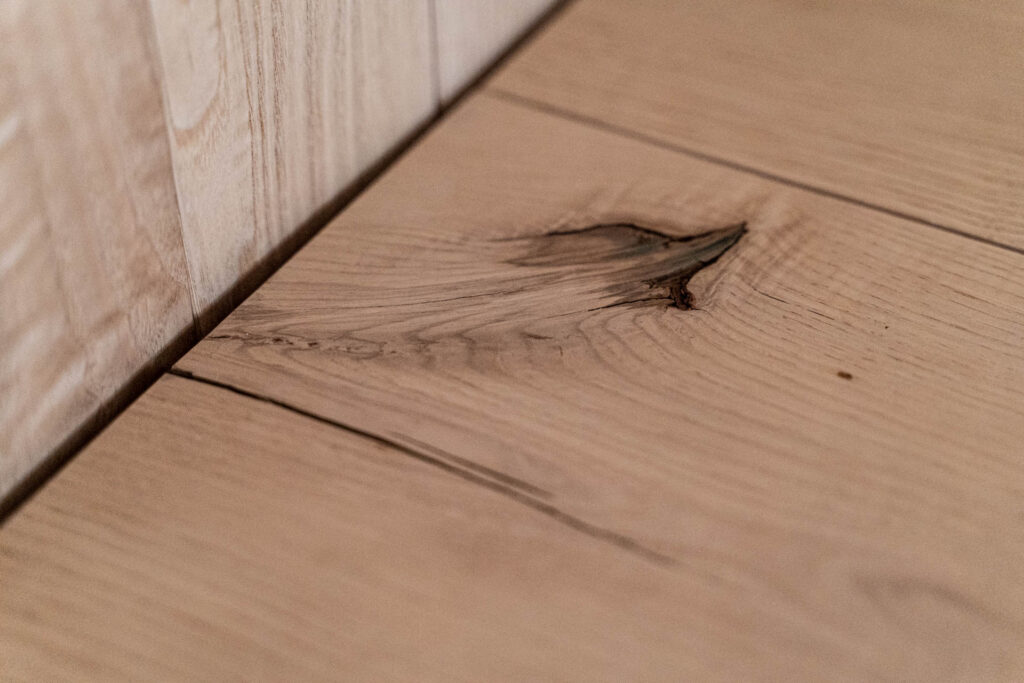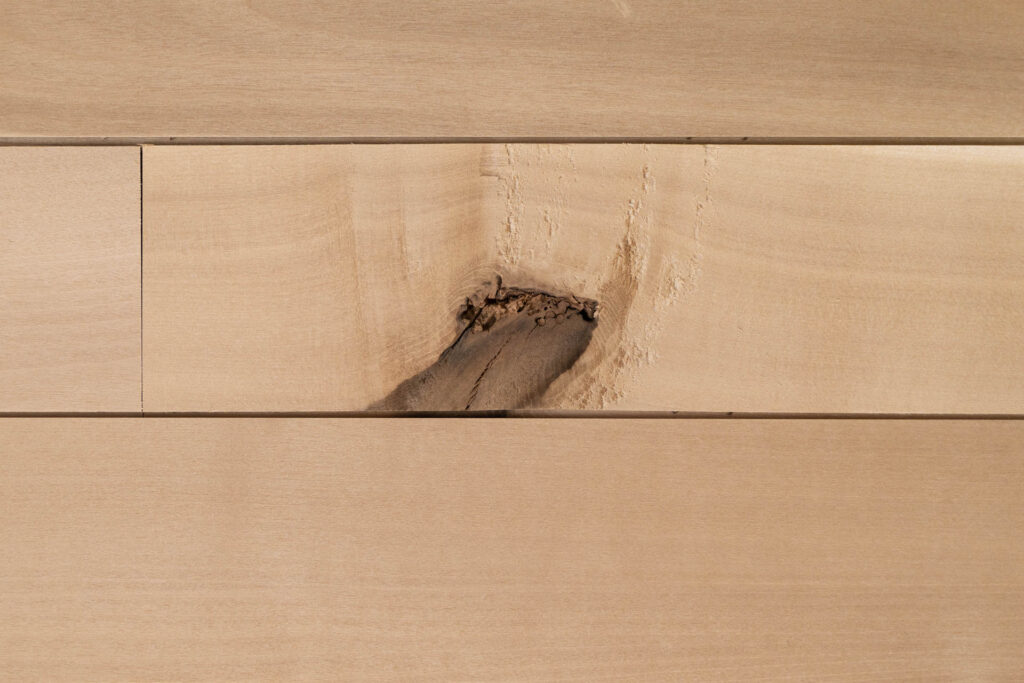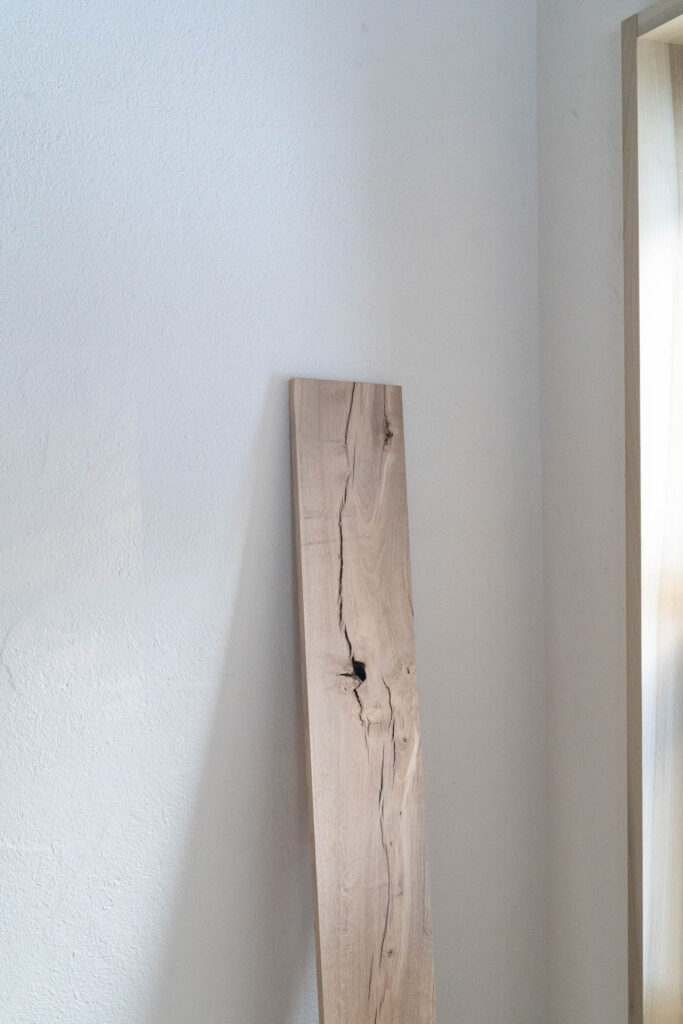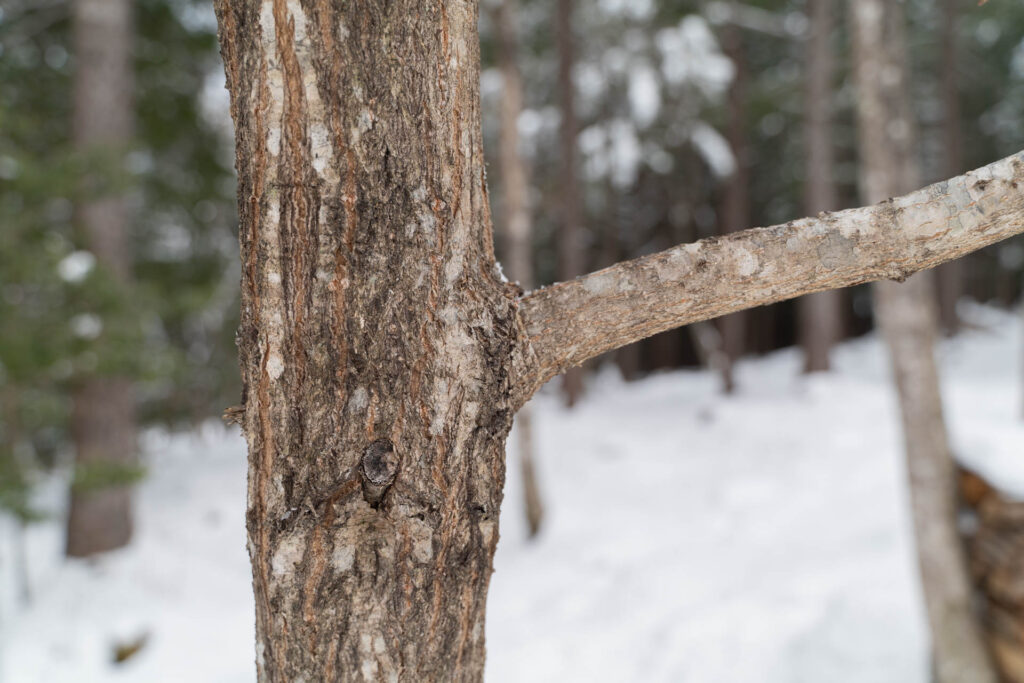
FUSHI JOURNAL
Are cracks and knots a flaw?
January 2023
We avoid cracks and knots in our wood If a product has such things, it is subject to claims. If you see a beautiful product in a showroom and find a split or knot in your purchase, you will be in an uproar. Many manufacturers fear this and use safe veneers or printed plywood. Even if they use beautiful solid materials, they don't want them to crack later, so they covered them with paint. Many products are injected with resin or compressed with great force to eliminate the characteristics of wood. As a result, it no longer needs to be wood.
Wood has been used a lot in Japan since ancient times, and (one of the main reasons for this was its familiarity) it was also expected to have other effects besides its physical properties. Wood has microscopic holes in it, which regulate humidity in the room. In Japan's humid climate, this characteristic must have been of great use.
According to our analysis, wood with more cracks and knots tended to have more releasing chemicals emitted from the wood. The cracks and knots are an outlet for the chemicals. It is important to note that the value of cracks and knots is very different from conventional ones when focusing on the chemicals of wood. And since knots are the traces of branches, it is also important to know that we are looking for branch-free wood.
私たちは木材を使う際に、割れや節は避ける。製品にそんなものがあれば、それはクレームの対象だ。ショールームで綺麗な製品を見て、自分の購入したものに割れや節があれば大騒ぎになるだろう。多くのメーカーはそれを恐れ、無難な突板やプリント合板を使う。綺麗な無垢材を使っていても、後々割れては困るので塗料で固めてしまう。樹脂を注入したり、大きな力で圧縮して木の特性を無くそうとした製品が実に多い。結果、それは、もはや木である必要はない。
古くから日本では木材がたくさん使われているが、(それは身近にあったのも大きな理由の一つだが、)物理的な特性以外の効果も見込まれていた。木材には微細な穴が空いており、これが室内の調湿を行う。湿潤な気候にある日本では、この特性が大いに役立っていたはずだ。
私たちが分析した結果によれば、割れや節が多い木材ほど木材から揮発される成分が多い傾向にあった。割れや節は成分の出口になっているのだ。木材の成分に着目すると、割れや節の価値は従来のものとは大きく異なることを知っておきたい。そして、節とは枝の痕跡なので、枝のない木を求めていることも知っておきたい。
